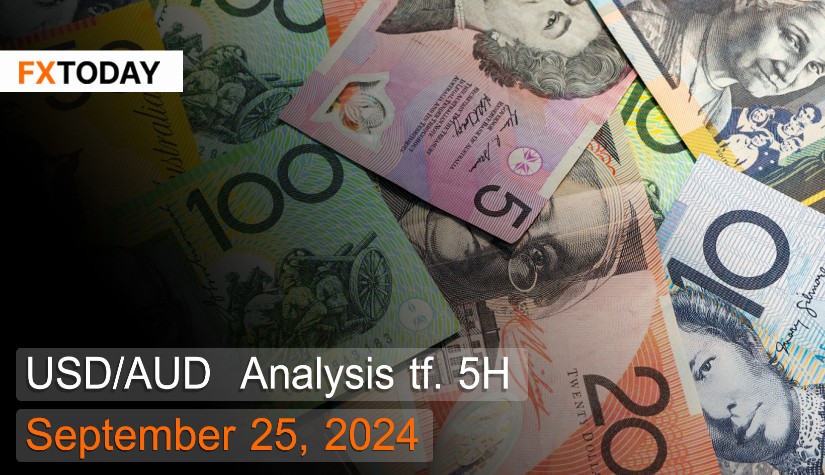Australia's economy has shown signs of slight deceleration.
The Australian dollar continues to strengthen. This is due to the latest inflation report, which has led investors to take a more positive outlook on potential interest rate cuts by the Reserve Bank of Australia (RBA). However, the RBA has maintained the interest rate at 4.35%, in line with the committee's confirmation to keep rates steady at least until the end of the year to ensure inflation does not rise again. Additionally, the Australian dollar has been buoyed by China's latest economic stimulus measures, which could help boost demand in Australia's export market.
The RBA held interest rates at 4.35% during its September meeting, marking the seventh consecutive time it has kept rates unchanged. Nonetheless, the central bank still sees the latest inflation figures as being too high and will continue to monitor economic trends before deciding on future monetary policies. Australian banks have predicted that core inflation might decrease slightly, but it will not return to the 2-3% target range in the near term.
The latest inflation report highlighted a significant factor in inflation's decline: temporary government support in the form of electricity discounts. However, the RBA noted that this drop in inflation is unsustainable. The central bank also observed that household consumption is expected to recover in the second half of 2024, amid easing price pressures due to increased competition. However, this could result in slower growth in output and employment towards the end of the year.
The Composite PMI fell to 49.8 in September, down from 51.7 in August, signaling that economic activity has contracted again. Growth in the services sector was insufficient to offset the sharp decline in manufacturing output. Additionally, new orders continue to show a downward trend. Nevertheless, the number of new businesses remains on the rise, which supports employment growth. Pressure on production costs has slightly eased as raw material prices have decreased, and labor costs have shown only modest increases.
Australia's 10-year government bond yield has risen to 3.97%, as investors assess data pointing to a slowdown in inflation. However, the RBA's decision to hold rates steady remains a key factor supporting the high bond yields, in contrast to the U.S. Federal Reserve, which has cut interest rates by 50 basis points.
Techical analysis data (5H)
Resistance: 1.4663, 1.4698, 1.4766
Source: Investing.com
Buy/Long 1: If the price touches support in the price range of 1.4492 - 1.456 but cannot break the support at 1.456, you may set a TP at approximately 1.4698 and SL at around 1.4457 or according to your acceptable risk.
Buy/Long 2: If the price breaks the resistance in the price range of 1.4663 - 1.4698, you may set a TP at approximately 1.4766 and SL at around 1.4492 or according to your acceptable risk.
Sell/Short 1: If the price touches resistance in the price range of 1.4663 - 1.4698 but cannot break the resistance at 1.4492, you may set a TP at approximately 1.4663 and SL at around 1.4766 or according to your acceptable risk.
Sell/Short 2: If the price breaks the support in the price range of 1.4492 - 1.456, you may set a TP at approximately 1.4457 and SL at around 1.4698 or according to your acceptable risk.
Pivot point September 25, 2024 11:23 PM. GMT+7
|
Name
|
S3
|
S2
|
S1
|
Pivot Points
|
R1
|
R2
|
R3
|
| Classic | 1.4457 | 1.4492 | 1.456 | 1.4595 | 1.4663 | 1.4698 | 1.4766 |
| Fibonacci | 1.4492 | 1.4531 | 1.4556 | 1.4595 | 1.4634 | 1.4659 | 1.4698 |
| Camarilla | 1.4598 | 1.4608 | 1.4617 | 1.4595 | 1.4636 | 1.4645 | 1.4655 |
| Woodie's | 1.4473 | 1.45 | 1.4576 | 1.4603 | 1.4679 | 1.4706 | 1.4782 |
| DeMark's | - | - | 1.4577 | 1.4604 | 1.468 | - | - |
















